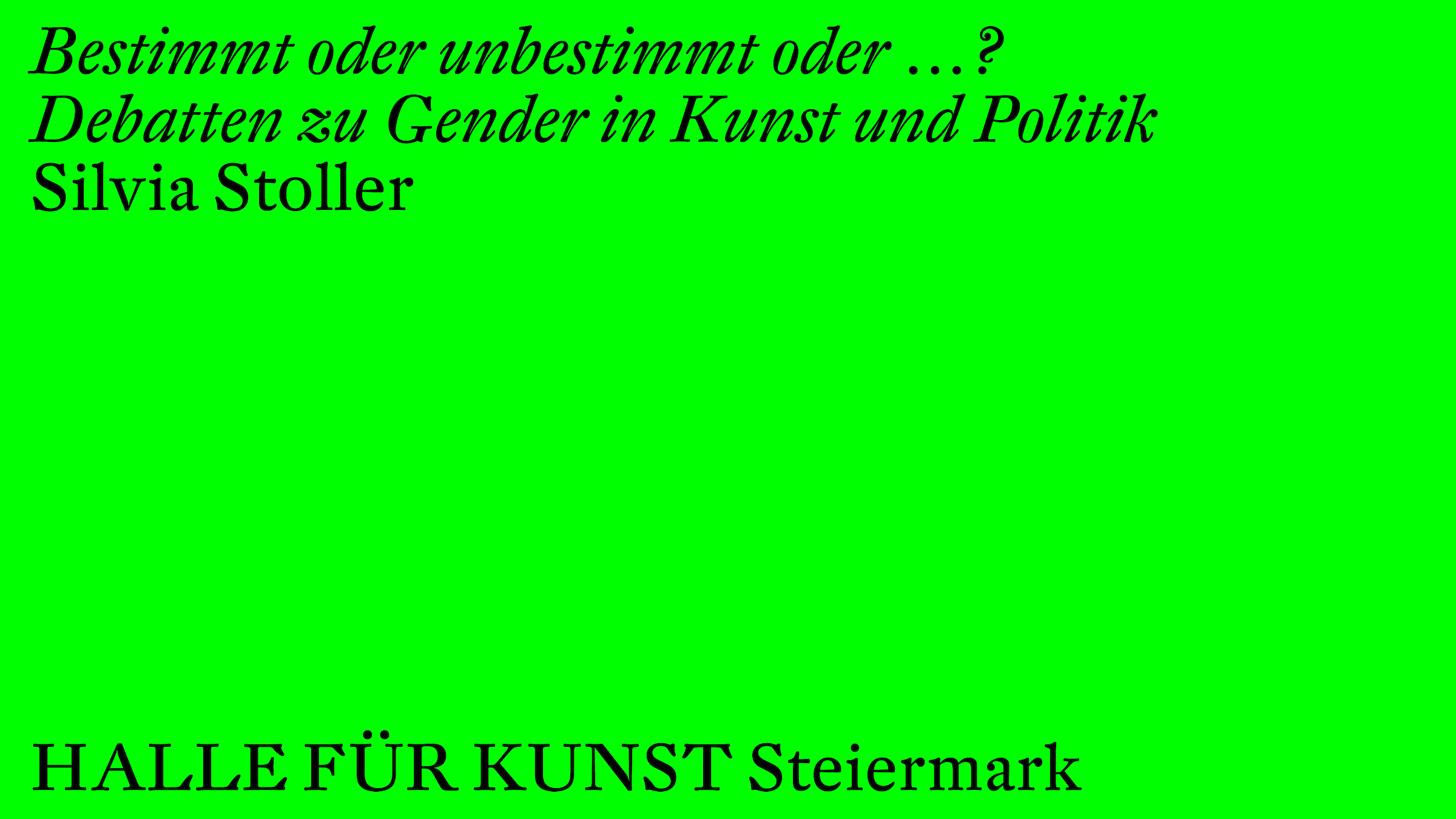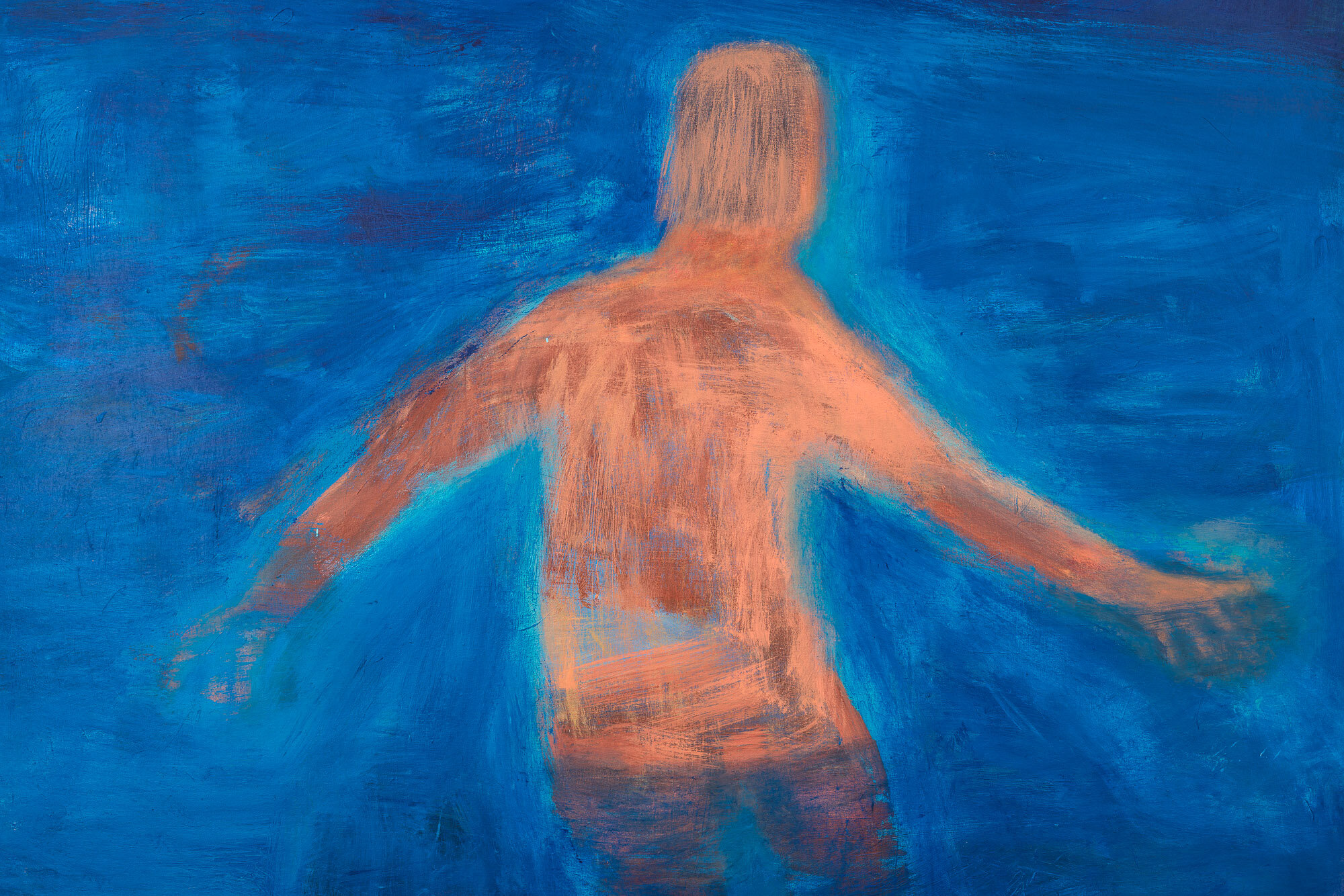Eurotopia. What ist your Europe?
Presentation of Works
This contribution shows the works of all 11 selected artists of the Open Call Eurotopia, which was carried out in the context of the exhibition Europe: Ancient Future.
From March to the 1st of May the Open Call Eurotopia. What is your Europe? took place in cooperation with the digital platform nextmuseum.io.
The call is intended as a complement to the exhibition Europe: Ancient Future curated by Sandro Droschl. During the call, HALLE FÜR KUNST Steiermark received a large number of submissions from international artists on the themes of Europe, transnationality, and the reality of European life.
From the submissions, the team has made a selection of a total of 11 positions, which we would like to present to our visitors. The selected contributions will also be made accessible via a screen in the foyer and can be viewed for the remaining duration of the exhibition.
The selection of the artistic works was based on the exhibition and the question What is your Europe?
Nadine Arbeiter
Bull’s head (from the small palace Knossos) (2016)
70 x 50 cm, letterpress and drawing on wood
Mask (polychrome female head from Mycenae) (2016)
30 x 24 cm, acrylic and marker on wood
Nadine Arbeiter’s two works Bull’s Head (from the Small Palace of Knossos) (2016) and Mask (Polychrome Female Head from Mycenae) (2016) are based on ancient and historical finds. The model for the bull’s head comes from the small palace in Knossos (1550−1500 BC) and can be seen in the Archaeological Museum in Herakleon. The polychrome female head originally dates from the 13th century BC and was found below the castle of Mycenae. The mask was also used, among other things, as a prop for Arbeiter’s video work My Three Lyrical Identities (2016).
My Three Lyrical Identities https://vimeo.com/197612722
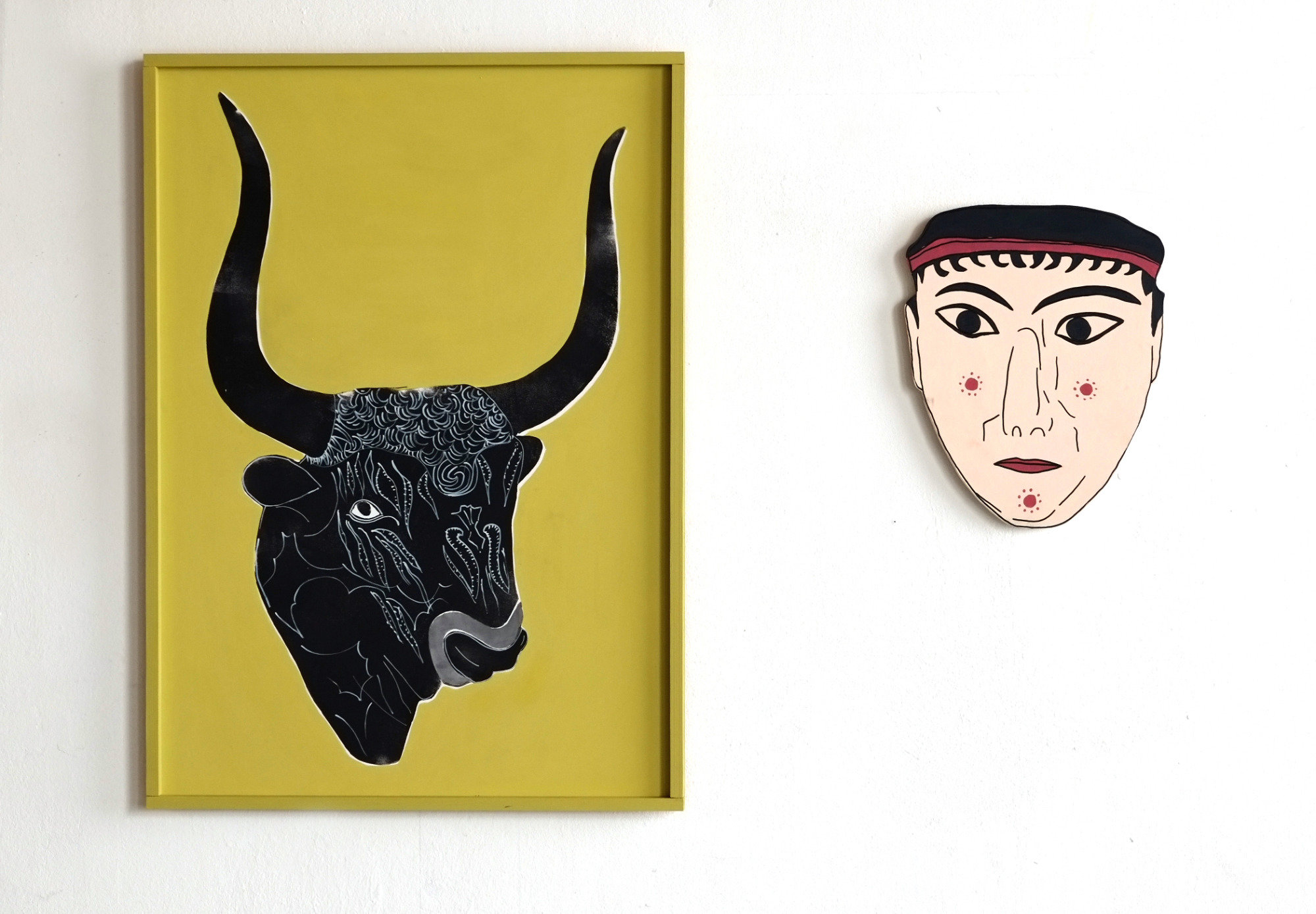
Nadine Arbeiter (*1980 Stuttgart, lives in Düsseldorf) deals in her artistic works with the human figure intertwined with practices of media self-representation. Arbeiter studied at the Academy of Fine Arts in Münster and at the Academy of Fine Arts in Vienna. Her works have been included in solo and group exhibitions at institutions such as the Wilhelm Lehmbruck Museum, Duisburg; Produzentengalerie, Dortmund; Ars Electronica Center, Linz and the State Museum of Contemporary Art, Thessaloniki. Arbeiter has received several awards and scholarships, including the scholarship of the Ministry of Culture and Science of North Rhine-Westphalia and a scholarship of the Cultural Office of Düsseldorf.
Anne Barth
Vsbl (2020)
Multimedia Project
Through her project vsbl (2020), Anne Barth is working to give refugees and their individual stories a voice and to ensure that they do not get lost in the media coverage as a part of a mass. Media reports from Moria speak of 20,000 refugees, a number that makes it easy to forget that these are 20,000 individual people with their stories. The artist dedicates herself to these stories by means of video portraits that open up an immediate encounter and create a tension between intimacy and distance. Unmediated, the people look into the camera while various stories and thoughts unfold by means of a voice-over.
https://vsbl.art
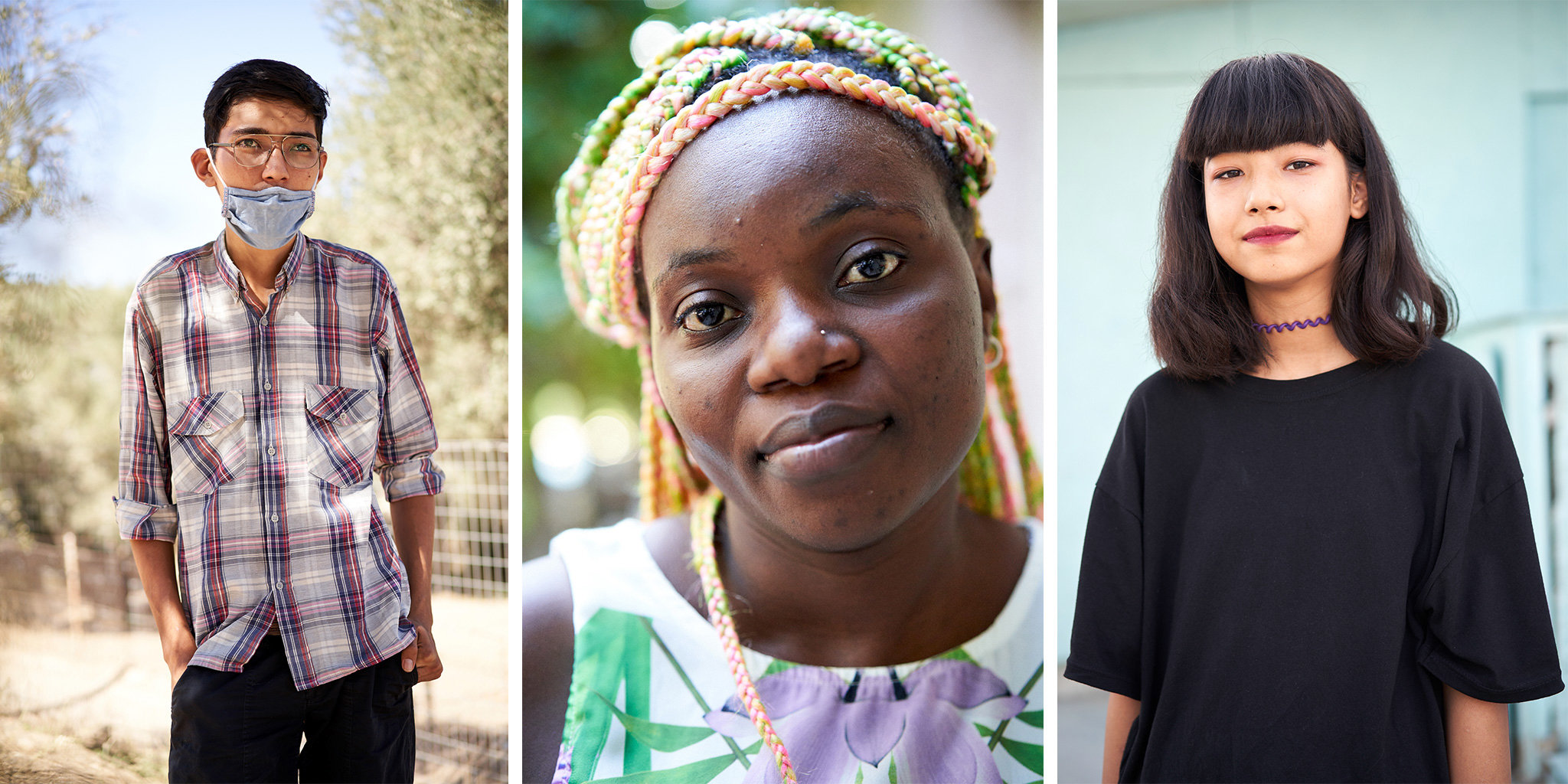
Anne Barth (*1982 Berlin, lives in Berlin) is a freelance photographer from Berlin and intertwines conceptual approaches with poetic motifs and moods in her practice. She also regularly collaborates with NGOs and documents socio-political events. An online exhibition of her project vsbl was recently shown by the Heinrich Böll Foundation. Barth studied at the Fotoakademie Köln and was a scholarship holder of the state of NRW, Germany in 2020.
Kuesti F.
Europapa
A conversation at the right time (2014)
Video
8:30 min.
With Kuesti F. and Alexander Busse.
Camera and editing: Chris Brandl.
© mobtik 2014
The setting, a claustrophobic-looking concrete (play) square, where a man in a tiger shirt wanders along the fences, partly ironically, partly threateningly. From the OFF we hear a conversation that deals with freedom of expression, voter turnout and democracy fatigue. What would happen if the fence no longer protected us?
A docufictional reflection about personal, popular as well as populist narratives and strategies, which try to take up the topic of “Fortress Europe” on the textual as well as on the visual level.
For more and regularly updated news about the filmmaker, visit www.facebook.com/mobtik
Kuesti F. (*1976 Wiesbaden, lives in Düsseldorf) is an independent filmmaker specialized in the production of short-format stories in text, moving image and sound. His more than 250 realized artistic projects range from experimental media art to more traditional forms of storytelling. His works were represented internationally in various institutions and film festivals, including the Museum of the Moving Image, New York; the Louvre Museum, Paris; FILE Electronic Language International Festival Sao Paolo; Multimedia Museum, Moscow; the International Short Film Festival Cologne; Festival du Film Subversif, Metz; and the Poetry Film Festival Vienna.
Jonas Höschl
Manfred Weber (2019)
Video
5:10 min.
Jonas Höschl’s video work Manfred Weber (2019) consists of various samples from the commercials of 41 parties that have contested the European elections in Germany in May 2019. The resulting mosaic of political diversity is dramatized musically; Falco’s song Europa can be heard and the soundtrack is based on Bavarian brass band music. Höschl examines the suggestive imagery of advertising agencies and makes clear how uniform the parties’ self-representations are. The artist deconstructs the representations by breaking through the promising narratives with recordings of resistance and police violence.
Jonas Höschl (*1995 Regensburg, lives in Munich) uses photography and printmaking to explore areas of social conflict and forms of political and media representation. Höschl studied various artistic subjects at the Academy of Fine Arts in Nuremberg and Munich. He has received several prizes and scholarships, including the cultural prize of the district of Upper Palatinate for printmaking and a scholarship to the Salzburg Summer Academy. His works have been on display at SchauRaum, Darmstadt and Edel Extra, Nuremberg, among others.
Bea Nielsen
From the series Struggle for Space (2020/2021)
The Colossus moves on (2021)
Poster, ballpoint pen, text collage, correction strip
39,5 x 30 cm
Untitled (2021)
Digital photography, c‑print
60×40 cm (edition 1/10)
In her current series Struggle for Space (2020÷21), Bea Nielsen investigates the political appropriation of public space by taking up forms of expression of civil society such as posters, graffiti, and other interventions. These provide inferences about issues such as urban transformation, demography, and diversity. The found materials are photographed by the artist, reworked and sometimes intertwined with art-historical motifs, creating new possibilities of connection and spaces for interpretation. Through her work it becomes apparent that a struggle for space, a struggle on the level of signs and opinions, as well as ideas of another Europe implies.
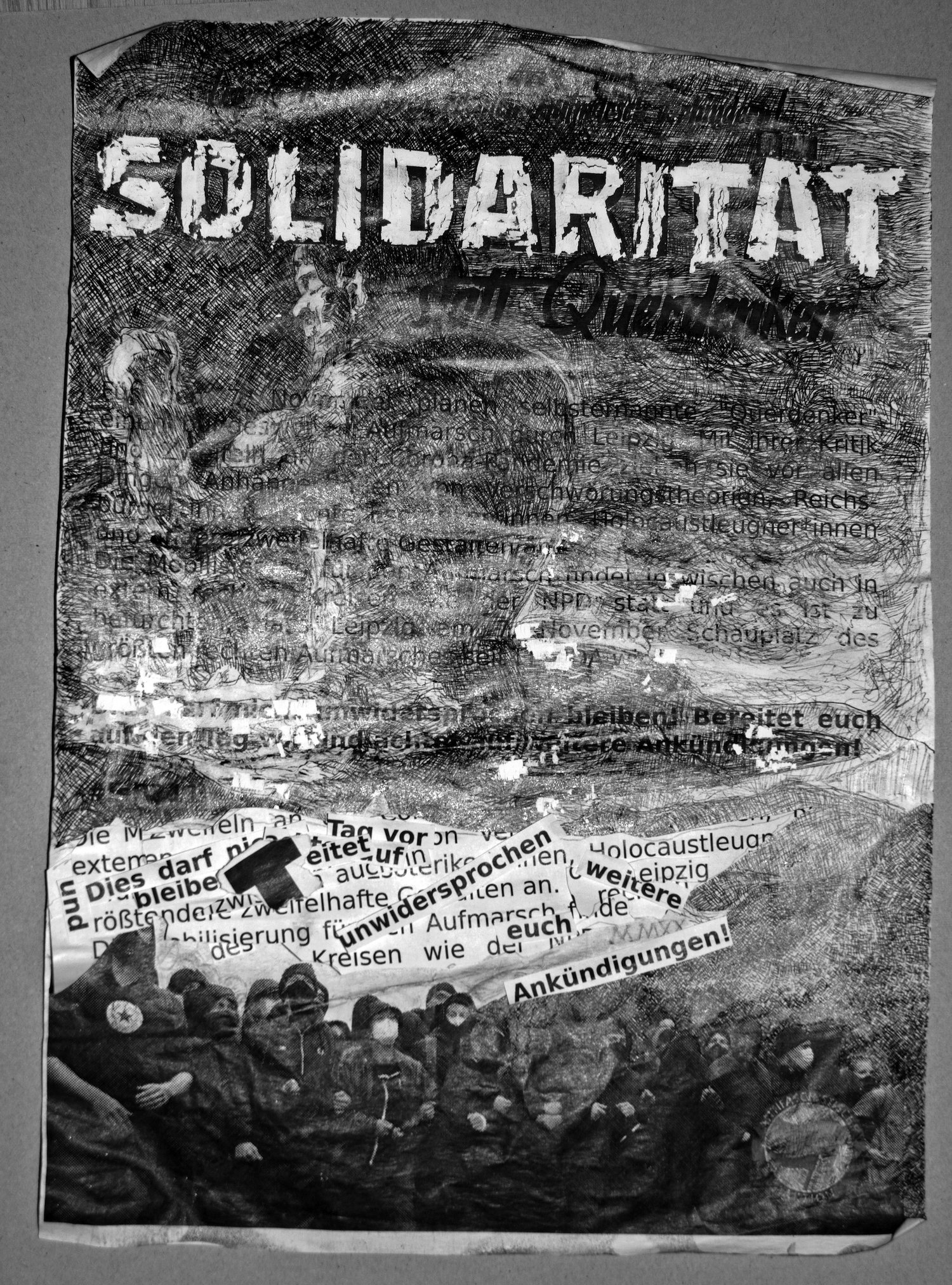
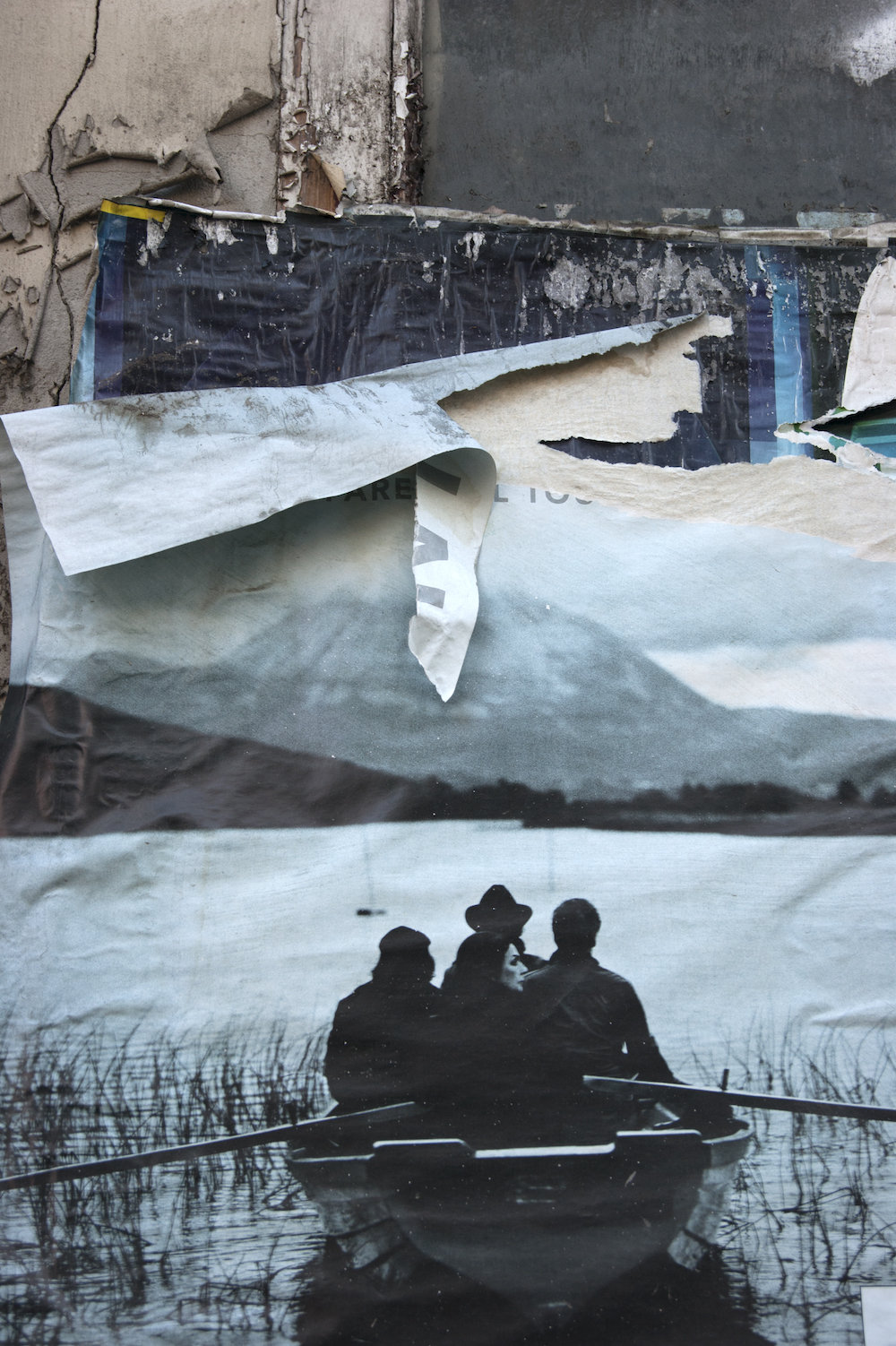
Bea Nielsen (*1974 Rostock, lives in Leipzig) artistic work is characterized by an experimental approach to various media, such as photography, painting, texts and objects. Nielsen investigates socio-political processes, which she intertwines with moments of the autobiographical. Nielsen studied at the Casper David Friedrich Institute in Greifswald and at the Evening Academy of the Academy of Visual Arts in Leipzig. Her works have been shown in institutions such as the Tapetenwerk, Leipzig; the Hochschule für Grafik und Buchkunst, Leipzig; the Japanese House, Leipzig and in public spaces in the course of a traveling exhibition through Saxony as well as various art festivals.
Liza Osepaishvili-Nemtsova
From the Series The body object: Ecology of the Art (2015)
Photography and video works
In the series of works The body object: Ecology often the Art (2015), Georgian artist Liza Osepaishvili-Nemtsova approaches the connections between humans and nature through video and photography. For this purpose, the artist creates pictures of human models, which she equips with pieces of material made of plaster, textile, ropes and packaging material, with masks and costumes. The bodies become objects, the objects become bodies, both are in a theatrical interplay with nature and landscape. Osepaishvili Nemtsova sets in motion collective processes that express the search for a new relationship with nature. She asks what role Europe could play in the development of a new ecological consciousness.
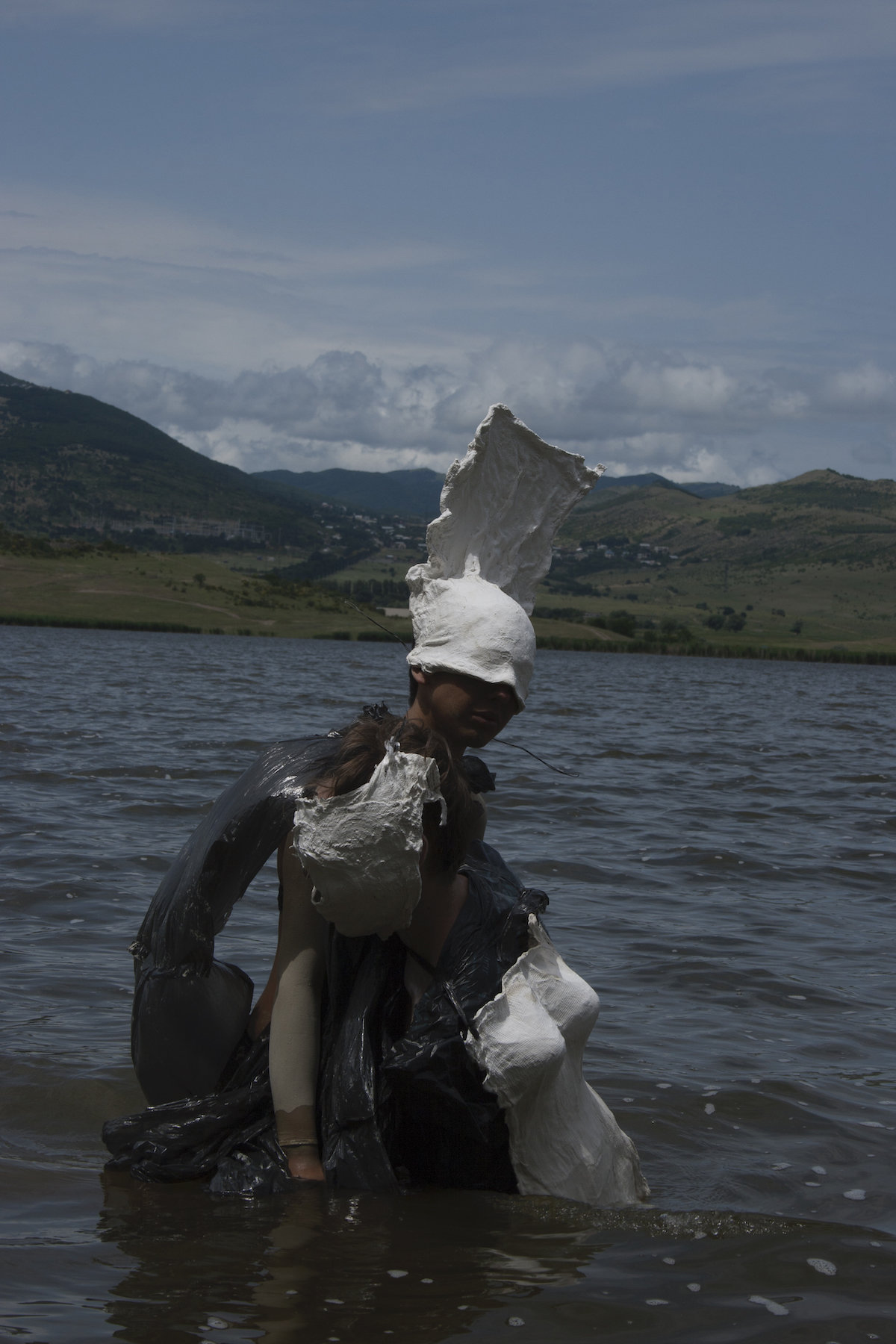
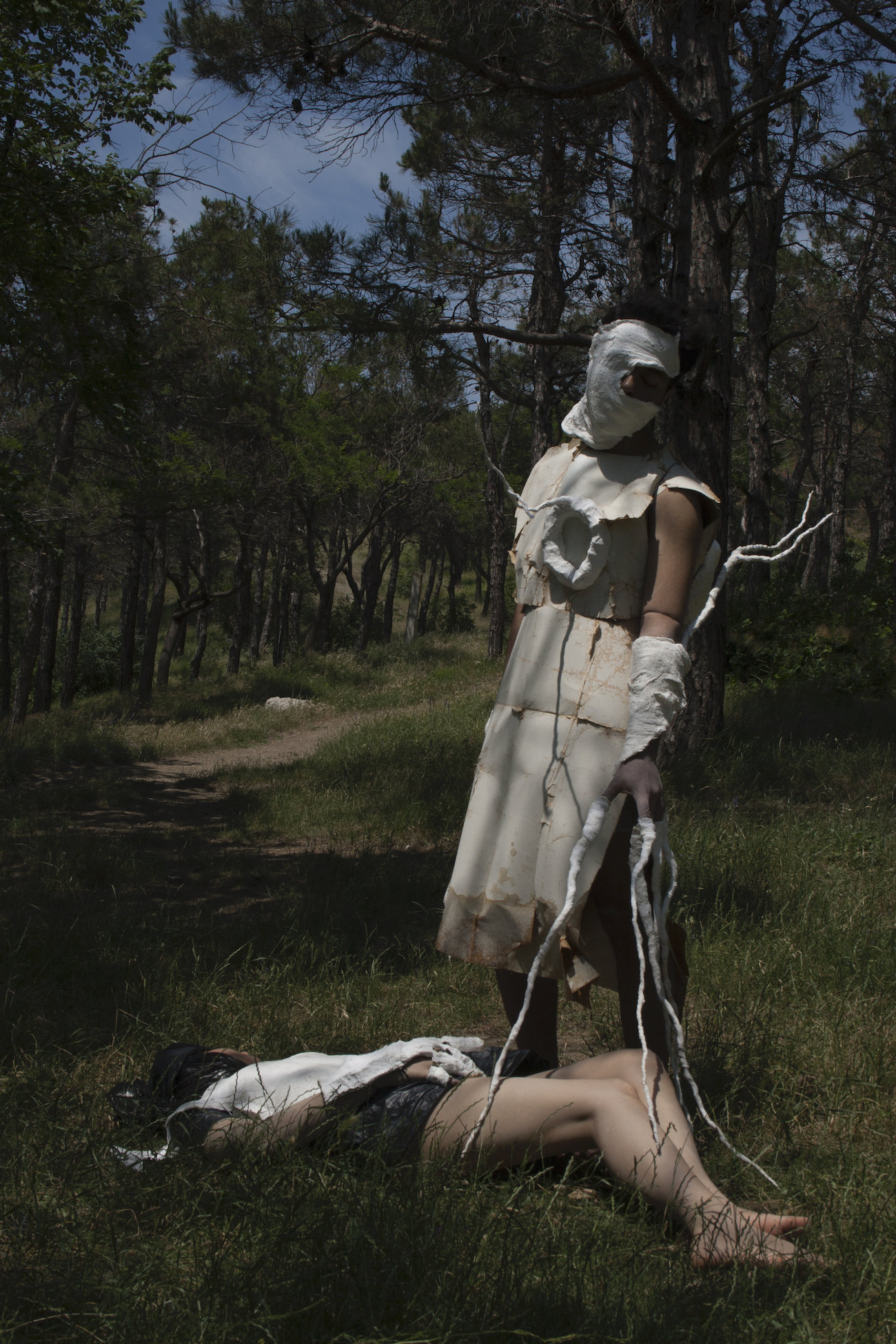
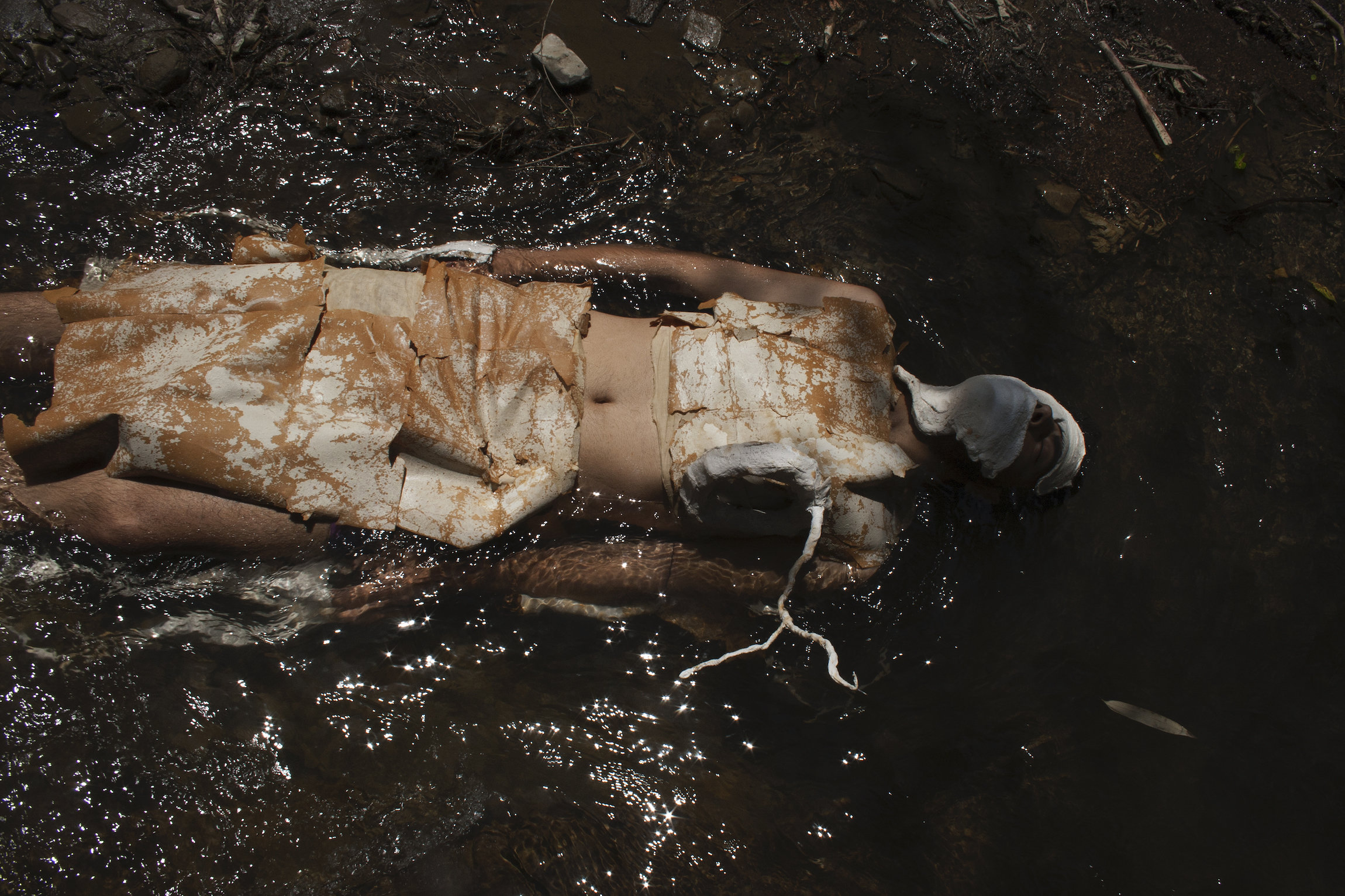
Liza Osepaishvili-Nemtsova (*1972 Tiflis, lives in Tiflis) is a Georgian artist who is specialized in photography and printmaking techniques. Among other things, she uses surrealism as a conceptual method to explore the relationship of humans to their environment. Osepaishvili-Nemtsova studied in Moscow and at the Academy of Arts in Tbilisi. Exhibitions of her work have been held, for example, at the Tbilisi History Museum; Manège, St. Petersburg; Convento Sant’Anna, Portugal; and the Georgian Academy of Arts, Tbilisi.
Sven Piayda
The Discovery of Europa (2016)
HD Video (1280×720), silent
4:30 Min.
In The Discovery of Europa (2016), Jupiter’s moon Europa is viewed from the perspective of a space satellite orbiting it. The distant namesake of the European continent becomes a parable. We look from the outside at something very large and recognize the interaction of the moon with other stars, which stand in a common balance to each other. The search for a new world means at the same time that we long for a better one. Can Europe live up to this?
Sven Piayda (*1977 Gelsenkirchen, lives in Mühlheim/Ruhr and Luxembourg) s a conceptual artist who uses photography, video, sound, and computer-manipulated and ‑generated imagery. The artist’s works often cite motifs from media and art history, play with the postmodern idea of remixing, as well as mirroring the process of image production and consumption. Piayda was trained in design technology at the University of Essen. Piayda’s works have been shown in numerous solo and group exhibitions, including Galerie 143, Dortmund; Kunstverein Bochumer Kulturrat, Bochum; Kunstmuseum Gelsenkirchen; Max Ernst Museum, Brühl and at Stadtmuseum Schlössli, Aarau.
Bohdan Pylypushko
From the Series Texture Gaps:
The Semiotics of the Pandemic in Warsaw’s Urban Spaces (2020)
Photography
In response to the spread of the pandemic, dark cellophane tapes have been used to restrict use of Warsaw’s playgrounds. Hundreds of alienated silhouettes of swings and carousels became a part of the everyday sight of the city. In his photo series “Texture Gaps” the author documents the subsequent changes and extends the meaning of the urban semiotics of prohibition beyond its utilitarian purposes. He reflects on the substantive role of the public sphere in democracy and its eclipse during the lockdown in 2020, which was accompanied by police misconduct and attacks by the right-wing authorities on the rights of women and minorities in Poland.

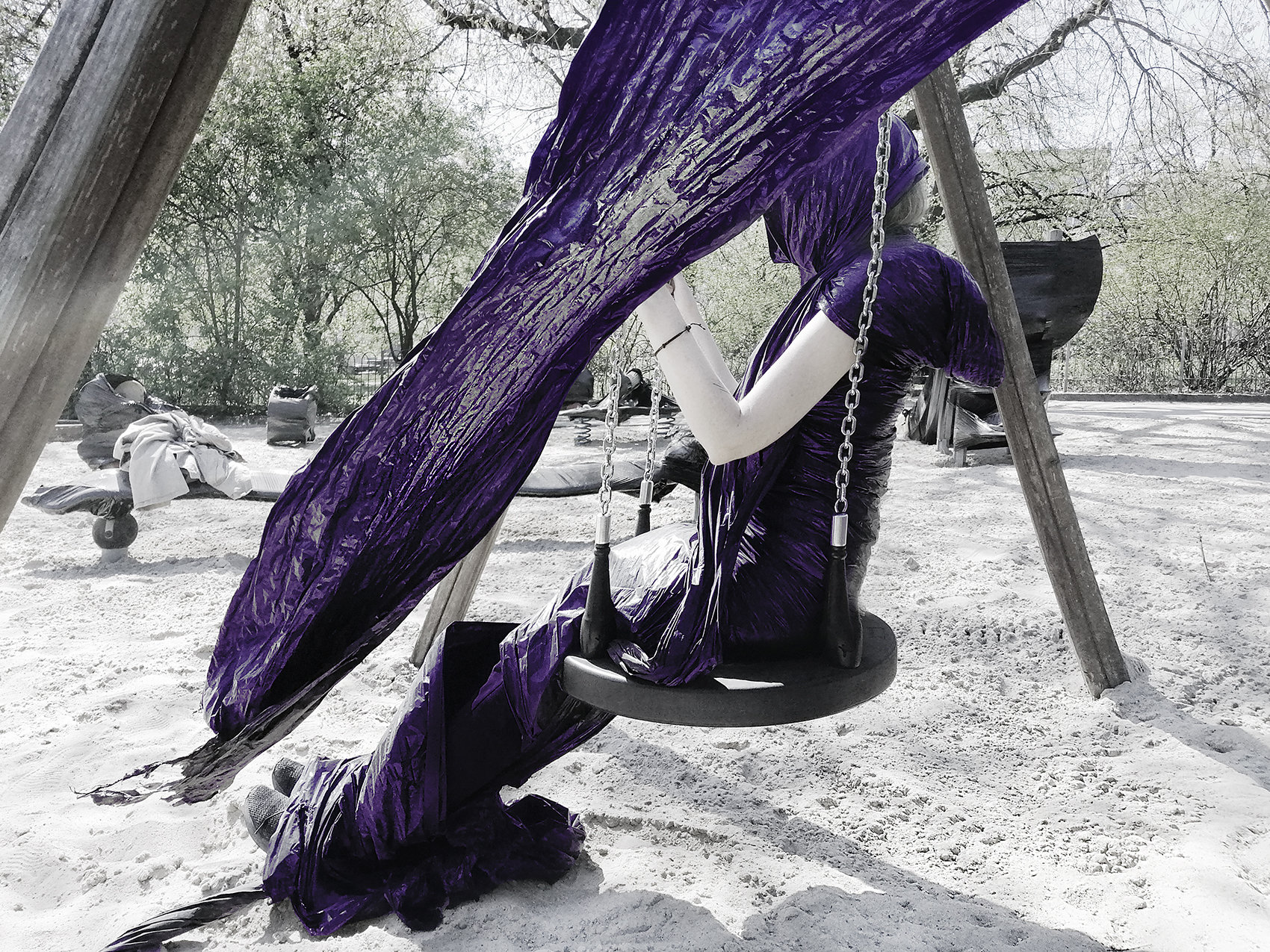

Bohdan Pylypushko (*1990 Sumy, Ukraine; lives in Warsaw) is an artist and art historian who works in the media of printmaking and photography. He examines the phenomenon of inner emigration in underground culture during totalitarian regimes and its long-term effects on self and social awareness. Bohdan Pylypushko received his PhD in Art History at the Modern Art Research Institute of the National Academy of Arts of Ukraine, MA in Printmaking and Book Illustration at the Ukrainian Academy of Printing, and completed a scholarship at the Academy of Fine Arts in Warsaw.
Nika Rukavina
In the end it’s all about the money (2016)
Performance
HD-Video (1080p, 16:9)
7:56 min.
In the end it’s all about the money (2016) is a performance by Nika Rukavina, in which she uses a saw to cut out 12 stars from 12 one-euro coins and then arranges them into a circle on a blue fabric base. In this way, a new flag of the EU is created, which refers to the economic policy orientation of the Union. At the same time, Rukavina points out that bad political decisions can lead to crisis-like developments and names right-wing populism as a consequence. In doing so, she highlights the EU’s responsibility to promote positive change.
Nika Rukavina (*1980 Rijeka, lives in Rijeka) is a multimedia artist who works predominantly in installation art, but whose practice also includes performance, mime, drawing, sculpture and video. The artist deals with issues of political identity and investigates social reality with its inequalities and discrimination processes. She studied at the Academy of Fine Arts in Venice and has exhibited at Kunsthaus Graz, the Museum of Contemporary Art, Zagreb; and Memphis Gallery, Linz, among others.
Susanna Schoenberg
Deep Interview – on shaping and monitoring of borders (2018)
HD Video
30:50 min.
In Deep Interview (2018), one sees an unusual interview situation in which an interviewer dressed in blue asks meticulous questions about the logic of the EU’s border security against a blue background. It is an interview situation without a visible counterpart and the answers also remain absent. Susanna Schoenberg uses the method of the in-depth interview, which examines the exact wording of border security and asylum regulations. Another perspective that is included here is the perspective of flight and the needs of refugees, which questions the legitimacy of border control.
Deep Interview was created in collaboration with cultural scientist Christiane König and actress and presenter Valeria Risi. Sound design: Dirk Specht.
Susanna Schoenberg (*1973 Faenza, lives in Cologne) works primarily in the fields of video art, photography, installation and performance. Among other things, she is concerned with the dramaturgy of non-linear narrative patterns and practices of a media realism. She is the founder of the agency for artistic collaborations arte-e-parte, as well as a lecturer at the Kunstakademie in Düsseldorf. Her work has been shown in institutions such as Polymer Art Space, Taipei; Kunststation Sankt Peter, Cologne; Galerie Francoise Heitsch, Munich; BACC Bangkok; Galerie damdam, Berlin; ZKM Karlsruhe and at Contemporary Art Ruhr, Essen.
Benjamin F. Stumpf
IN-TRANSIT (2009)
2‑channel video installation
13:45 min.
The installation IN-TRANSIT circles around the themes of migration, human trafficking and transit processes. The recombination of images, primarily captured photographically at the external borders of Europe, in Morocco (Melilla) and Turkey (Istanbul), reflects a diffuse sense of current global conditions. During the development and research phase, Istanbul played a major role as a place between continents and a hub for international events. In the juxtaposition of scenes from Europe and its edges, the work refers in terms of content to visible and invisible border demarcations. It tells of a global dream state in which power and powerlessness, control and loss of control are closely linked and creates a view of the edges of reality.
Benjamin Florian Stumpf (*1976 Solingen, lives in Hamburg) works primarily in the field of multimedia installation / project art and is known for his collaborative work with artist Antje Feger. Stumpf studied at the Muthesius University of Fine Arts and Design and at the Independent Study Program, Maumaus in Lisbon. His work has been shown internationally in solo and group exhibitions, including Biennale of the Tangible Image, Paris; Krasnodar Institute of Contemporary Art, Krasnodar; Culture Communication Center Klaipeda, Lithuania; Kunst im Untergrund, NGBK, Berlin; and at the Hamburger Kunsthalle. Stumpf has received various grants and project support in Germany and abroad from the Stiftung Kunstfonds; the Hamburgische Kulturstiftung; and ECOC- European Capital of Culture Istanbul, among others.





